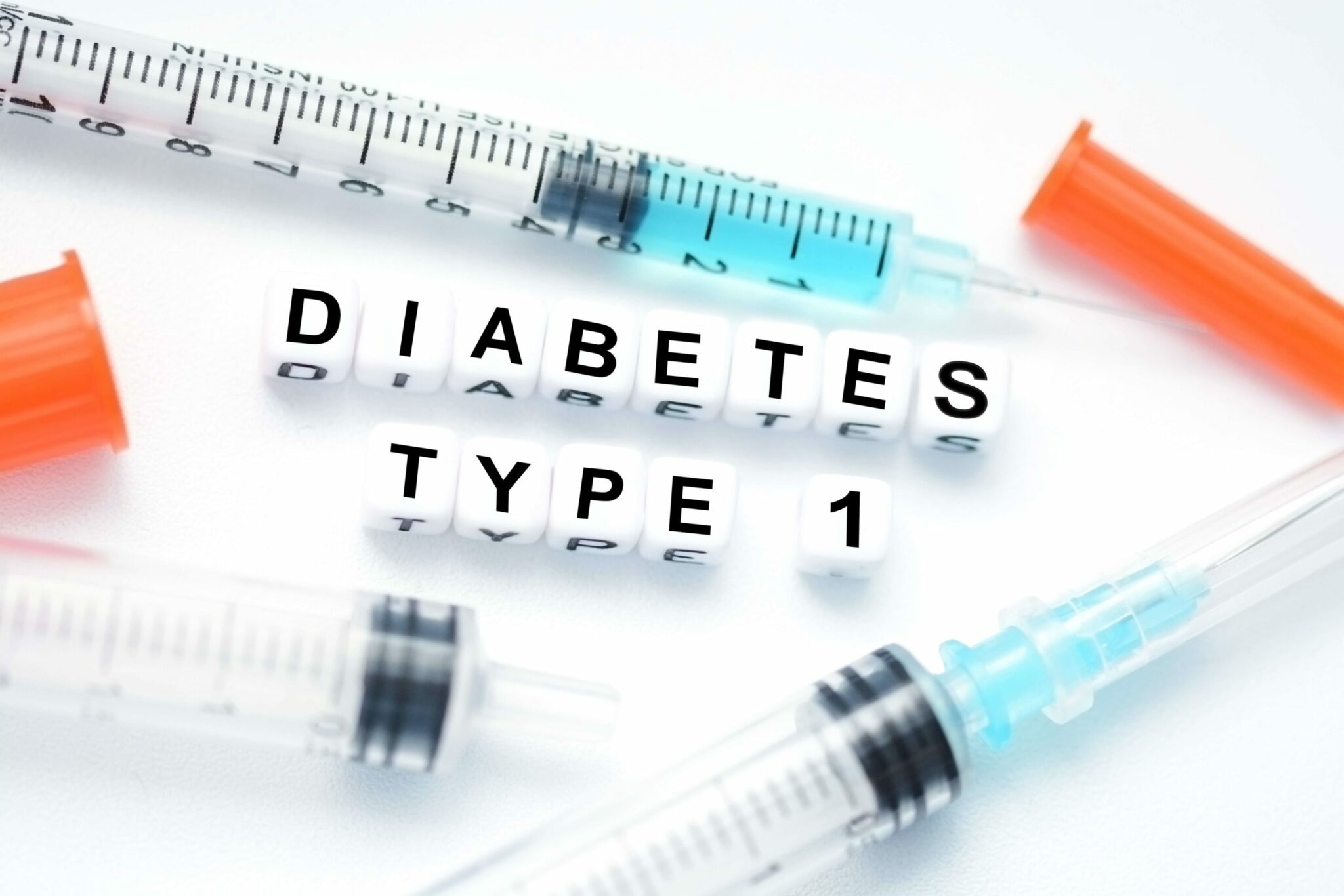A Guide to Type 1 Diabetes


- Type 1 diabetes is a chronic condition when the pancreas produces too little insulin.
- We need the hormone insulin to be allow our body to turn sugar into energy.
- Type 1 diabetes is not caused by lifestyle factors, unlike type 2 diabetes.
- Type 1 diabetes is often diagnosed in childhood and has no cure.
- Treatment of type 1 focuses on maintaining healthy blood sugar levels.
Diabetes occurs when the body is unable to regulate its blood sugar levels. The three most widely known variants are type 1 diabetes, type 2 diabetes and gestational diabetes. This article explores type 1 diabetes in more detail.
What is type 1 diabetes?
Type 1 diabetes mellitus (T1DM) used to be known as insulin dependent or juvenile/child-onset diabetes. It is unknown why some people develop T1DM and, unlike the type 2 variant, poor lifestyle choices and an unhealthy diet do not increase your risk. T1DM is often diagnosed during childhood and is a lot less common than T2DM.
The insulin deficiency seen in those with T1DM happens as a result of the immune system attacking and destroying the beta (insulin producing) cells in the pancreas. Insulin normally plays an essential role, transporting glucose from the bloodstream into the cells, where it is used for energy. Thus, without insulin, there is a build-up of sugar in the blood. High blood sugar levels (hyperglycaemia) can be very dangerous and, left unmanaged, can cause permanent damage to the nerves and the blood vessels.
Symptoms of Type 1 Diabetes
The symptoms of T1DM often come on suddenly and can be quite severe. Some of the most common are:
- Polydipsia
- Polyuria
- Polyphagia
- Unexplained weight loss
- Ketones in the urine
- Fatigue
- Irritability
- Blurred vision
- Frequent infections (particularly in the gums, skin and vagina).
Risk factors for the development of T1DM
Whilst the exact cause of T1DM remains unknown, there are some known risk factors:
- Family history. You have an increased risk of developing T1DM if a parent or sibling has it.
- Environmental factors. Sometimes a diagnosis of T1DM comes following exposure to a viral infection.
- Geography. Some countries have a higher than average incidence of T1DM; examples include, Finland and Sweden.
Diagnosis of T1DM
Whilst increased thirst and insatiable hunger, accompanied by frequent urination are strongly indicative of diabetes, your doctor will probably want to confirm the diagnosis using a blood or urine test.
An A1C test might be used to measure average blood sugar levels. It calculates the percentage of blood sugar attached to haemoglobin. Levels below 5.7% are considered normal; a reading of 6.5% or higher on two tests suggests diabetes. If results from the A1C test are inconsistent, a random blood sugar test, or fasting blood sugar test might be used to check whether blood sugar levels are higher than the normal range.
Your doctor may also check for the presence of autoantibodies. These bind to the beta cells of the pancreas and signal the immune system to attack and destroy the beta cells. Autoantibodies can be detectable years before a diagnosis of diabetes is made, so if you are considered high risk, your doctor might want to monitor your levels over time.
Urine samples are used to check for ketones. Ketones are produced by the liver when the body is unable to use glucose for energy and relies on fat instead. Having some ketones is not a problem, but having too many in the circulation can cause the blood to become acidic (ketoacidosis), which, left untreated, can be a very serious complication.
Complications
Long-term, poorly controlled diabetes is a significant health concern because the complications that develop gradually can be life-altering, or in severe cases life-threatening.
- Cardiovascular disease. People with diabetes are 2 to 3 times more likely to experience heart disease or a stroke.
- Nephropathy. Approximately 25% of people with diabetes develop kidney disease, characterised by damage to the organs’ delicate filtering system. In severe cases, patients require dialysis or transplant.
- Damage to the blood vessels supplying the retinas can cause eye disease (retinopathy), resulting in cataracts, glaucoma or even blindness. Regular eye screening is recommended for all patients with T1DM.
- Foot damage. Nerve damage or poor blood flow to the feet increases the risk of ulcers and infections. In severe cases, amputations become necessary.
- Skin infections and dry skin.
- Hearing impairment.
- Depression, which can have a negative impact on how well you manage your condition.
Treating T1DM
T1DM cannot be cured. Daily insulin is required, either via injection or pump, but this manages the consequences of the condition, rather than treating the proposed cause. The cause is anticipated to be an immune system attack on the body and as knowledge regarding this increases, there is hope that, in the future, a cure that targets the deficient part of the immune system may be possible.
In the meantime, management of the condition involves minimising the risk of serious complications. The optimal way of doing this is by keeping blood sugar levels within the target range. Exercising and eating a balanced diet can both help you to manage your diabetes.
Nabta is reshaping women’s healthcare. We support women with their personal health journeys, from everyday wellbeing to the uniquely female experiences of fertility, pregnancy, and menopause.
Get in touch if you have any questions about this article or any aspect of women’s health. We’re here for you.
Sources:
- “Diabetes.” Mayo Clinic, Mayo Foundation for Medical Education and Research, 30 Oct. 2020, www.mayoclinic.org/diseases-conditions/diabetes/symptoms-causes/syc-20371444.
- “Diabetes.” World Health Organization, World Health Organization, 8 June 2020, www.who.int/news-room/fact-sheets/detail/diabetes.
- Faye Riley. “Research Spotlight – Retraining the Immune System to Fight Type 1 Diabetes.” Diabetes UK, Diabetes UK, www.diabetes.org.uk/research/research-round-up/research-spotlight/research-spotlight-a-vaccine-for-type-1-diabetes.
- The Emerging Risk Factors Collaboration. “Diabetes Mellitus, Fasting Blood Glucose Concentration, and Risk of Vascular Disease: a Collaborative Meta-Analysis of 102 Prospective Studies.” The Lancet, vol. 375, no. 9733, 26 June 2010, pp. 2215–2222., doi:10.1016/s0140-6736(10)60484-9.
- “Type 1 Diabetes.” NHS Choices, NHS, www.nhs.uk/conditions/type-1-diabetes/about-type-1-diabetes/.
- “What Is Diabetes?” National Institute of Diabetes and Digestive and Kidney Diseases, U.S. Department of Health and Human Services, 1 Dec. 2016, www.niddk.nih.gov/health-information/diabetes/overview/what-is-diabetes.










































